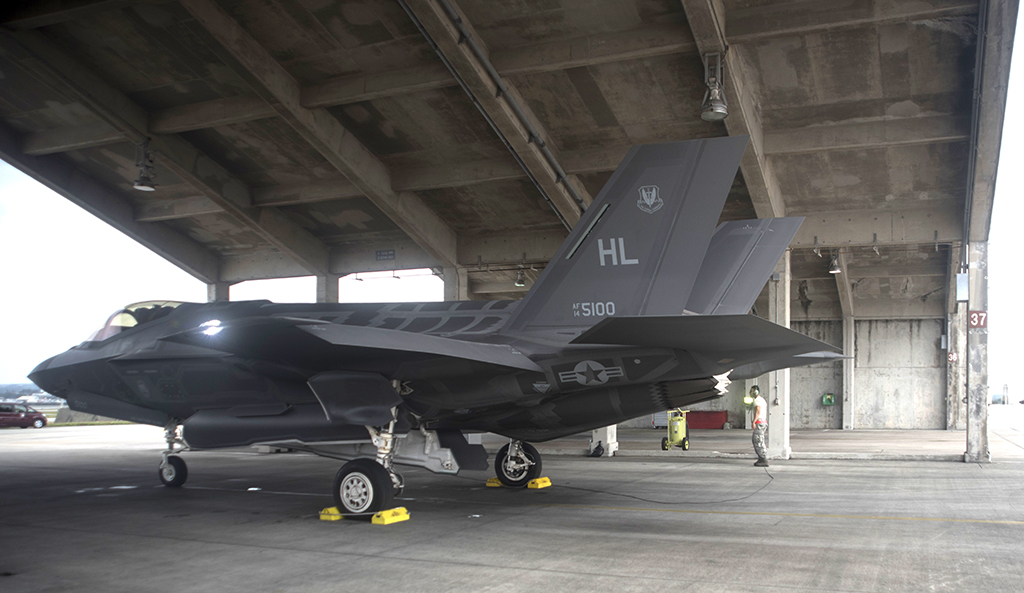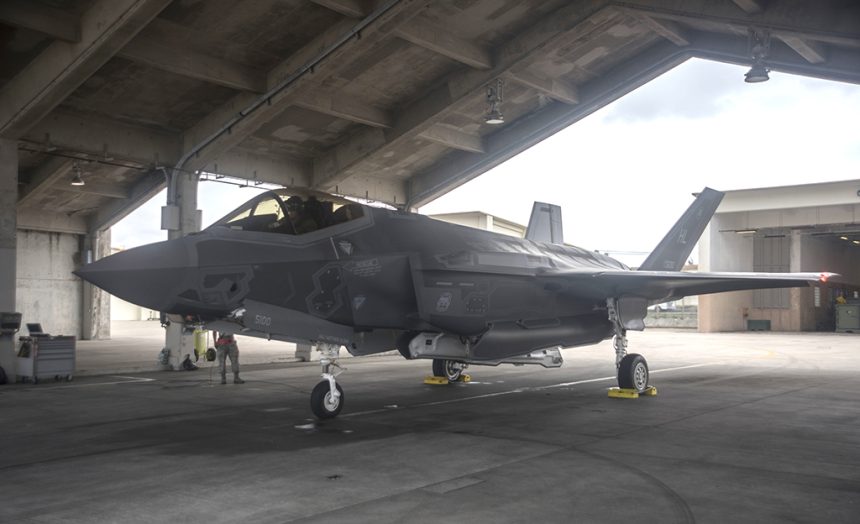Some recent photos of the Hill AFB F-35s deployed to Kadena Okinawa, seem to suggest the 5th Generation fighters have started operating in “stealth mode”.
Stealth aircraft, such as the F-22 Raptor or the F-35 Lightning II 5th generation jets are equipped with Luneburg (or Luneberg) lenses: radar reflectors used to make the LO (Low Observable) aircraft (consciously) visible to radars. These devices are installed on the aircraft on the ground are used whenever the aircraft don’t need to evade the radars: during ferry flights when the aircraft use also the transponder in a cooperative way with the ATC (Air Traffic Control) agencies; during training or operative missions that do not require stealthiness; or, more importantly, when the aircraft operate close to the enemy whose ground or flying radars, intelligence gathering sensors.
This is what we explained explaining how the Israeli the heavy presence of Russian radars and ELINT platforms in Syria cause some concern to the Israeli F-35 Adir recently declared IOC:
[…] the Russians are currently able to identify takeoffs from Israeli bases in real-time and might use collected data to “characterize” the F-35’s signature at specific wavelengths as reportedly done with the U.S. F-22s.
In fact, tactical fighter-sized stealth aircraft are built to defeat radar operating at specific frequencies; usually high-frequency bands as C, X, Ku and S band where the radar accuracy is higher (in fact, the higher the frequency, the better is the accuracy of the radar system).
However, once the frequency wavelength exceeds a certain threshold and causes a resonant effect, LO aircraft become increasingly detectable. For instance, ATC radars, that operate at lower-frequency bands are theoretically able to detect a tactical fighter-sized stealth plane whose shape features parts that can cause resonance. Radars that operate at bands below 300 MHz (lower UHF, VHF and HF radars), such as the so-called Over The Horizon (OTH) radars, are believed to be particularly dangerous for stealth planes: although they are not much accurate (because lower frequency implies very large antenna and lower angle accuracy and angle resolution) they can spot stealth planes and be used to guide fighters equipped with IRST towards the direction the LO planes might be.
F-35s deployed abroad usually feature their typical four radar reflectors: to exaggerate their real RCS (Radar Cross Section) and negate the enemy the ability to collect any detail about their LO “signature”. As happened during the short mission to Estonia and then Bulgaria, carried out by the USAF F-35As involved in the type’s first overseas training deployment to Europe or when, on Aug. 30, 2017, four U.S. Marine Corps F-35B Lightning II joined two USAF B-1B Lancers for the JSF’s first show of force against North Korea: the F-35Bs flew with the radar reflectors, a sign they didn’t want their actual radar signature to be exposed to any intelligence gathering sensor in the area.

Since they almost always fly with the radar reflectors, photographs of the aircraft without the four notches (two on the upper side and two on the lower side of the fuselage) are particularly interesting: for instance, some shots taken on Jan. 24, 2018 and just released by the U.S. Air Force show F-35As deployed to Kadena AB, Japan, in October as a part of the U.S. Pacific Command’s Theater Security Package program, preparing to launch without their Luneberg reflectors.
The lack of reflector on the top left position of this F-35 is pretty evident in the following photographs:



For comparison, the following photo shows one of the 388FW F-35A jets on the ground at Kadena in November 2017 with the radar reflector.

Obviously the lack of radar reflectors is not a big deal: during their deployment to RAF Lakenheath last year, F-35As of the 388th FW have flown without reflectors some local sorties with the 48th FW F-15E Strike Eagles (for example on Apr. 26, 2017). However, photographs of deployed F-35s without Luneburg Lenses are pretty rare and, for this reason, interesting and newsworthy.









